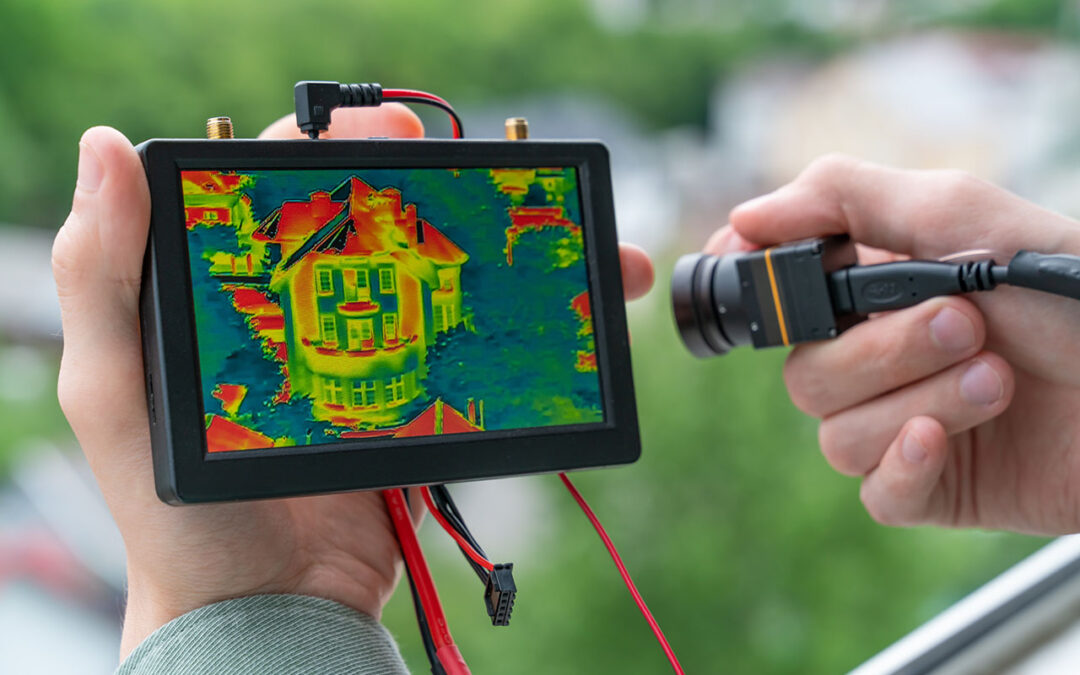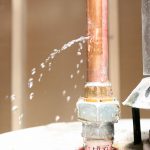Introduction
Water conservation has never been more critical. With the growing concerns of climate change, rapid urbanisation, and increasing water scarcity, it’s essential to find reliable ways to detect leaks and conserve water. Enter thermal imaging for leak detection. Have you ever imagined spotting leaks without breaking walls or floors? Well, thermal imaging makes this possible, proving to be a game-changer for water conservation efforts globally.
What is Thermal Imaging?
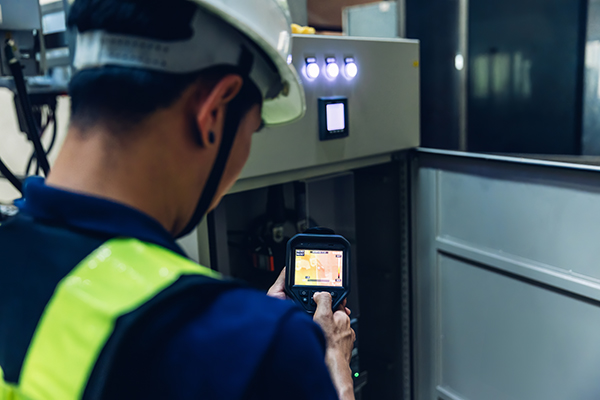 Thermal imaging is a cutting-edge technology that visualises temperature differences on surfaces. It operates by detecting infrared radiation and converts this information into images. Essentially, thermal cameras let you “see” heat. Hotter areas appear brighter, while cooler areas appear darker, enabling the easy identification of leaks where water temperature contrasts with surrounding structures.
Thermal imaging is a cutting-edge technology that visualises temperature differences on surfaces. It operates by detecting infrared radiation and converts this information into images. Essentially, thermal cameras let you “see” heat. Hotter areas appear brighter, while cooler areas appear darker, enabling the easy identification of leaks where water temperature contrasts with surrounding structures.
Why Leak Detection is Vital for Water Conservation
The world faces a growing water scarcity crisis, making leak detection more important than ever. Undetected leaks lead to significant water wastage, increased utility bills, structural damage, and environmental harm. Imagine losing thousands of litres of water each day without even noticing—this happens more often than you’d think. Early leak detection through thermal imaging can significantly minimise these impacts.
How Thermal Imaging Helps Detect Leaks
Thermal imaging detects leaks by highlighting temperature variations caused by moisture. It allows experts to quickly identify leaks behind walls, under floors, or even in ceilings—places difficult to access or inspect manually. Early detection not only prevents further water loss but also reduces potential structural damage and associated repair costs.
Advantages of Using Thermal Imaging for Leak Detection
Non-Invasive Technology
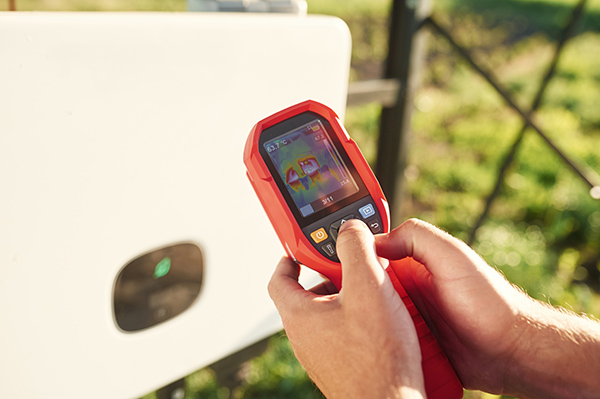 One of the most significant advantages of thermal imaging is its non-destructive nature. Unlike traditional methods that involve drilling holes or breaking structures, thermal imaging preserves property integrity. No more tearing down walls or pulling up floors just to pinpoint a leak.
One of the most significant advantages of thermal imaging is its non-destructive nature. Unlike traditional methods that involve drilling holes or breaking structures, thermal imaging preserves property integrity. No more tearing down walls or pulling up floors just to pinpoint a leak.
Cost-Effectiveness
Although thermal imaging technology might seem costly upfront, the long-term savings are substantial. By identifying leaks early, costly repairs and excessive water bills are dramatically reduced. Think of thermal imaging as a preventive health check—it saves you money and hassle down the line.
Precision and Reliability
Thermal imaging technology is renowned for its precision. It eliminates guesswork, providing accurate and reliable leak detection. Forget trial-and-error approaches; thermal imaging ensures you tackle the right problem immediately.
Applications of Thermal Imaging in Leak Detection
Residential Leak Detection
In homes,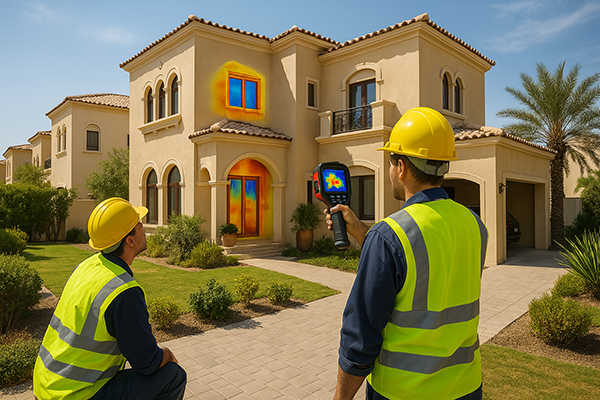 thermal imaging effectively detects hidden leaks, preventing water wastage and potential damage. From leaking pipes behind bathroom tiles to underfloor heating issues, homeowners significantly benefit from this reliable leak detection method.
thermal imaging effectively detects hidden leaks, preventing water wastage and potential damage. From leaking pipes behind bathroom tiles to underfloor heating issues, homeowners significantly benefit from this reliable leak detection method.
Commercial and Industrial Applications
Businesses have even more at stake, with leaks causing operational downtime and higher costs. Thermal imaging quickly identifies leaks in large-scale plumbing systems, HVAC units, and manufacturing plants, helping businesses maintain efficiency and profitability.
Municipal Water Management
Thermal imaging plays a vital role in public water management systems, detecting leaks in extensive networks. By swiftly locating and repairing leaks, municipalities drastically reduce water loss, save taxpayer money, and support sustainability initiatives.
The Future of Thermal Imaging Technology
The future of thermal imaging is incredibly promising, with ongoing advancements improving sensitivity, accuracy, and accessibility. Innovations like drone-mounted thermal imaging cameras and AI-powered software solutions could soon offer even faster, more precise leak detection.
Challenges and Limitations
Despite its benefits, thermal imaging isn’t perfect. Some limitations include difficulty detecting leaks in certain weather conditions or through very thick insulation. Additionally, initial setup costs can be a barrier for smaller organisations and homeowners.
How to Choose a Thermal Imaging Service Provider
When selecting a thermal imaging provider, consider their expertise, equipment quality, and previous customer testimonials. A reliable service provider will offer clear pricing, thorough assessments, and professional recommendations tailored to your needs.
DIY vs Professional Thermal Imaging Services
While DIY thermal imaging cameras are available, professional services typically offer higher accuracy and comprehensive assessments. DIY solutions might suffice for minor issues, but for extensive or complex problems, professional services are strongly recommended.
Thermal Imaging vs Traditional Leak Detection Methods
Traditional leak detection methods often involve guesswork, invasive procedures, and prolonged diagnostic times. In contrast, thermal imaging provides non-invasive, rapid, and precise diagnostics. Although the traditional approach is sometimes cheaper initially, the long-term benefits of thermal imaging usually outweigh the initial savings.
Implementing Thermal Imaging for Leak Detection in Your Organisation
To introduce thermal imaging in your organisation, first, assess your leak detection needs and budget. Next, research suitable providers or equipment options. After selecting your provider, schedule regular inspections to proactively prevent leaks and conserve water efficiently.
Tips for Maximising Benefits from Thermal Imaging Leak Detection
- Schedule regular checks to ensure early leak detection.
- Train your staff on understanding thermal images to better interpret reports.
- Integrate thermal imaging with regular maintenance routines for maximum effectiveness.
Environmental Impact of Thermal Imaging
Broad adoption of thermal imaging for leak detection significantly reduces unnecessary water wastage, making a considerable impact on environmental conservation. Every litre saved helps combat global water shortages, making thermal imaging a powerful ally in sustainable living.
Conclusion
Thermal imaging for leak detection is undeniably shaping the future of water conservation. Its precision, non-invasive nature, and cost-saving benefits make it an indispensable tool for homes, businesses, and municipalities alike. By embracing this innovative technology, we take a proactive stance against water wastage and contribute to a more sustainable world.
FAQs
- What exactly can thermal imaging detect in leak detection?
Thermal imaging detects temperature variations, helping identify leaks behind walls, under floors, and in concealed spaces by visualising moisture differences. - How accurate is thermal imaging technology?
Thermal imaging is highly accurate, reliably detecting even small leaks with precision, greatly reducing false positives and guesswork. - Is thermal imaging safe to use?
Yes, thermal imaging is entirely safe. It uses non-contact infrared technology, posing no risks to health or structures. - Can thermal imaging technology save money long term?
Absolutely. While upfront costs can be higher, thermal imaging helps detect leaks early, preventing expensive damages and reducing water bills significantly. - How soon can leaks be detected using thermal imaging?
Thermal imaging typically identifies leaks almost immediately. The technology provides real-time visualisation, enabling rapid detection and quick repair action.
